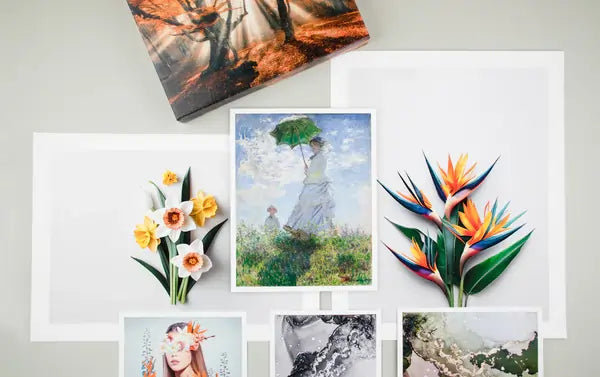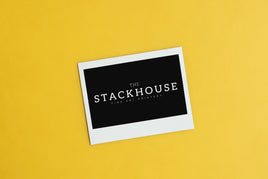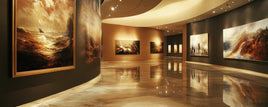TL;DR: Great lighting makes your prints look richer, sharper, and more intentional. Get the best results by choosing the right quality of light, aiming fixtures at the correct angle, and matching color temperature to the artwork and room.
Light can elevate or distract. The same print looks very different under hard spotlights than it does under a soft, even wash. This guide explains how light quality, direction, and color temperature influence the look of your art prints, with simple tips you can apply at home or in a gallery.
The Three Core Elements of Art Lighting
Every lighting plan starts with three variables. Adjust them and you change how a print feels in the room.
- Quality: Hard light creates crisp edges and dramatic shadows. Soft light wraps gently and reduces shadow contrast. Softer light is created by diffusing or increasing distance and beam spread.
- Direction: The angle of the beam controls reflections, glare, and perceived texture. A slight angle emphasizes paper texture and canvas weave. A head-on beam flattens shadows and can increase glare on glossy surfaces.
- Color temperature: Measured in Kelvin. Lower values feel warm and cozy. Higher values feel cool and clean. Choose a range that flatters the art and suits the room.
Light Quality: Hard vs Soft
Hard light can act like a spotlight. It makes colors feel punchy and defines edges, which suits bold posters and graphic prints. Soft light spreads evenly and can be more forgiving for portraits, matte papers, and watercolor reproductions. If your print is on a glossy or baryta surface, softer light reduces distracting hotspots. If you are deciding between papers, compare surfaces in our media guide.
Light Direction: Angle and Distance
Aim for a 30 to 45 degree angle from the ceiling or wall mount to the artwork. This minimizes glare, avoids the viewer’s reflection, and brings out subtle surface detail. For textured papers or canvas, a gentle side angle introduces small shadows that make the texture feel dimensional. If glare persists on glossy prints, increase the angle and spread, or consider anti-reflective glazing if you plan to frame. For quick, no-glare display, many artists choose mounted prints with matte papers.
Color Temperature and CRI
Color temperature changes how people perceive your palette. Warm light favors reds and golds. Cool light brings out blues and greens. For balanced viewing, use neutral white in the 3500 K to 4000 K range. Also check the CRI (Color Rendering Index). A CRI of 90 or higher helps colors appear accurate and saturated. If your room’s light shifts during the day, dimmable or tunable LEDs let you adapt without moving fixtures.
Fixture Types That Work Well for Prints
- Track lighting: Flexible, easy to aim at single pieces or a series. Good for rotating shows or gallery walls.
- Recessed lighting: Clean look for dedicated spaces. Use adjustable trims to control angle and spill.
- Picture lights: Mount above the frame for a classic presentation. Choose LED for low heat and stable color.
- Spotlights: Great for dramatic accents. Use carefully to avoid hotspots on glossy papers.
- LED panels or wall washers: Even illumination for uniform color and minimal shadowing.
Match Lighting to Print Surface and Presentation
- Glossy and baryta papers: Look vivid but show reflections. Use softer, angled light and consider anti-reflective glazing if framed. See our photo print options for finish choices.
- Matte fine art papers: Low glare and gentle tonal transitions work well under most fixtures. Explore giclée papers like Hot Press Bright or Photo Rag.
- Canvas: The weave responds nicely to angled light and low glare LEDs. Ready-to-hang gallery wraps make placement and aiming simple.
Practical Setup Tips
- Use LEDs to reduce heat and UV output. They protect prints and maintain stable color.
- Start with 150 to 300 lux for home viewing. Increase gently for bright spaces. Keep sensitive media away from direct sunlight.
- If framing, leave room for borders and mats to prevent edge shadows. Our border and size guide can help you plan for mat windows and signature space.
- Color check under the final lighting. Shift bulbs or dim levels until skin tones and neutrals look natural.
Need help choosing media and a lighting friendly presentation? Compare papers in our free media sample set, then order giclée fine art prints or mounted prints to simplify framing and display.









